- Tips for growing stunning petunias:
- 1. Choose the right seeds:
- 2. Start seedlings in mid-March:
- 3. Transplant carefully:
- 4. Provide adequate sunlight:
- 5. Water regularly:
- 6. Feed with fertilizer:
- 7. Deadhead regularly:
- 8. Control pests and diseases:
- 9. Support trailing varieties:
- 10. Enjoy the beauty:
- Nurturing seedlings in mid-March!
- Here are some tips for nurturing petunia seedlings:
- Choose the right petunia varieties
- Consider climate and growing conditions
- Start seeds indoors
- What you will need:
- Step 1: Prepare the seed starting trays or pots
- Step 2: Plant the seeds
- Step 3: Label the trays or pots
- Step 4: Cover the trays or pots
- Step 5: Provide light and warmth
- Step 6: Water regularly
- Step 7: Transplant the seedlings
- Step 8: Harden off the seedlings
- Use seed starting mix and provide adequate light
- Water and fertilize regularly
- 1. Watering
- 2. Fertilizing
- 3. Additional Tips
- Establish a consistent watering schedule and use balanced fertilizer
- Provide proper support
- Stakes and cages
- Trellises and fences
- Regular maintenance
- Use stakes or cages to keep petunias upright
- Questions and Answers:
- Can I start growing petunias from seeds in mid-March?
- What is the best way to sow petunia seeds?
- How often should I water petunia seedlings?
- When should I transplant petunia seedlings outside?
- How should I fertilize my petunia seedlings?
- What are some common problems that petunia seedlings may face?
- Videos: How To Grow Petunia From Cuttings , petunia propagation , petunia care
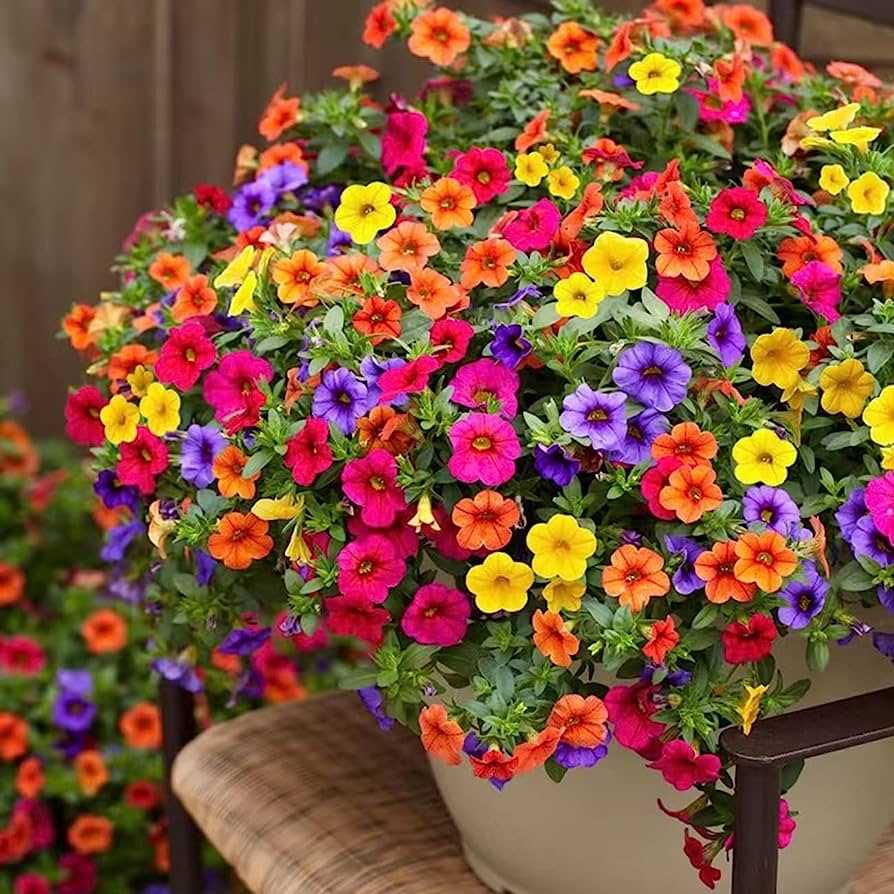
Spring is just around the corner, and it’s time to start thinking about your garden. If you want to add a pop of color and fragrance to your outdoor space, look no further than petunias. These vibrant flowers come in a variety of hues and can be easily grown from seedlings.
Mid-March is the ideal time to start nurturing petunia seedlings. Whether you’re a seasoned gardener or a beginner, these tips will help you grow stunning petunias and have a garden that will be the envy of your neighborhood.
First and foremost, choose a sunny spot for your petunias. These sun-loving flowers require at least six hours of direct sunlight every day. Make sure the spot you choose is well-drained and has loose soil. If you have heavy clay soil, consider adding compost or organic matter to improve drainage.
When it comes to watering, petunias prefer to be kept moist but not waterlogged. Water the seedlings thoroughly, allowing the soil to dry out slightly between waterings. Avoid overhead watering, as this can lead to fungal diseases. Instead, water at the base of the plants, making sure to water the roots.
Tip: To promote healthy growth, it’s essential to fertilize your petunias. Use a balanced, water-soluble fertilizer every two weeks. This will provide the plants with the nutrients they need to produce abundant blooms.
In conclusion, growing stunning petunias from seedlings is an exciting endeavor that can bring joy to any gardener. By following these tips, you’ll be on your way to creating a vibrant and beautiful garden that will be the talk of the town. So grab your gardening tools, get your hands dirty, and prepare to watch your petunias flourish!
Tips for growing stunning petunias:
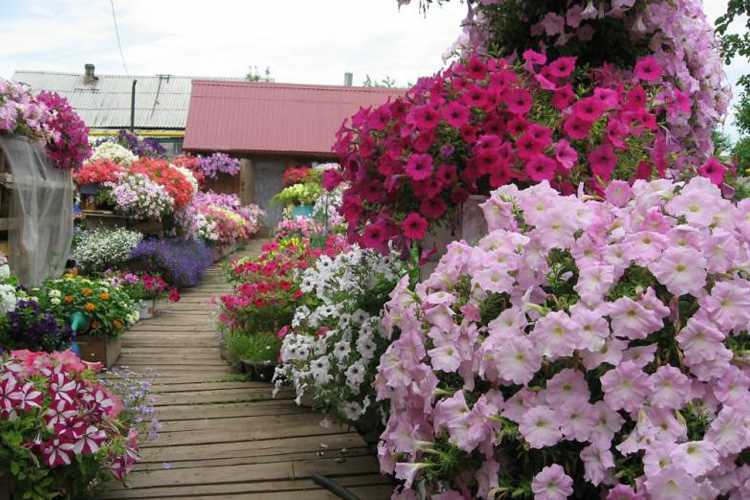

1. Choose the right seeds:
When purchasing petunia seeds, look for hybrids that are specifically bred for their vibrant colors and disease resistance. These varieties are often labeled as “garden performance” or “award-winning.” Additionally, consider the growing conditions in your area and choose seeds that are suited for your climate.
2. Start seedlings in mid-March:
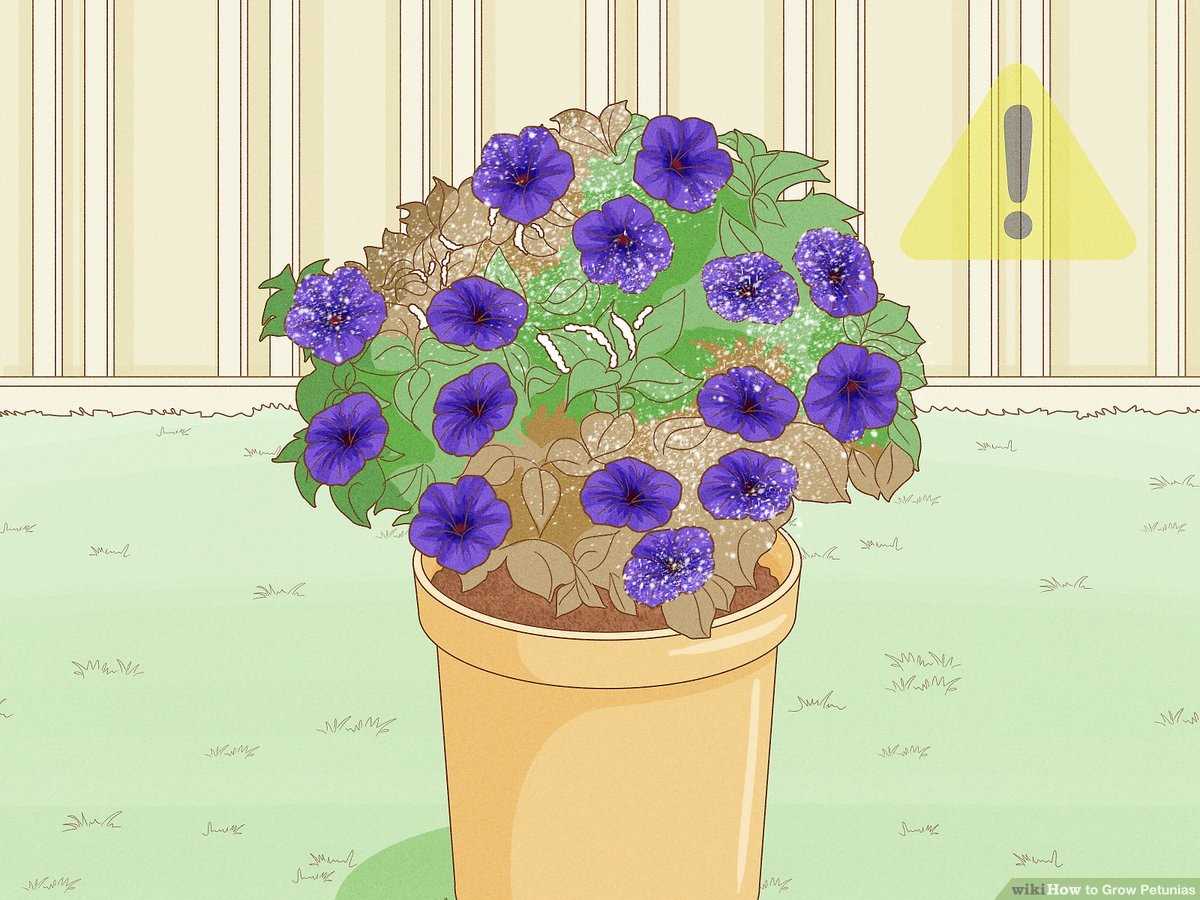

In mid-March, start your petunia seedlings indoors. Fill seed trays or small pots with a well-draining seed starting mix, and plant the seeds according to the package instructions. Keep the soil consistently moist and provide plenty of light for optimal germination.
3. Transplant carefully:
Once the seedlings have developed their first true leaves, they can be transplanted into larger containers or directly into the garden. When transplanting, handle the seedlings by the leaves to avoid damaging the delicate stems. Plant them at the same depth as they were growing in the seed tray or pot.
4. Provide adequate sunlight:
Petunias require at least 6 hours of direct sunlight per day to thrive. Choose a location in your garden that receives full sun and avoid areas with excessive shade. If you’re growing petunias in containers, place them in a sunny spot on your patio or balcony.
5. Water regularly:
Keep the soil consistently moist but not waterlogged. Water the petunias deeply once or twice a week, depending on the weather and soil conditions. Avoid splashing water on the leaves, as this can lead to disease and pest problems.
6. Feed with fertilizer:
Petunias are heavy feeders and benefit from regular fertilization. Use a balanced, slow-release fertilizer or liquid fertilizer designed for flowering plants. Follow the instructions on the packaging for proper application and be careful not to overfeed, as this can lead to excessive foliage growth and reduced blooming.
7. Deadhead regularly:
To encourage continuous blooming, remove faded flowers by pinching or cutting them off at the base of the stem. This process, known as deadheading, prevents the petunias from diverting energy into seed production and promotes the growth of new blooms.
8. Control pests and diseases:
Monitor your petunias regularly for signs of pests and diseases, such as aphids, snails, and fungal infections. If necessary, treat the affected plants with organic or chemical controls to prevent the spread and damage. Providing adequate air circulation and avoiding overhead watering can also help prevent disease problems.
9. Support trailing varieties:
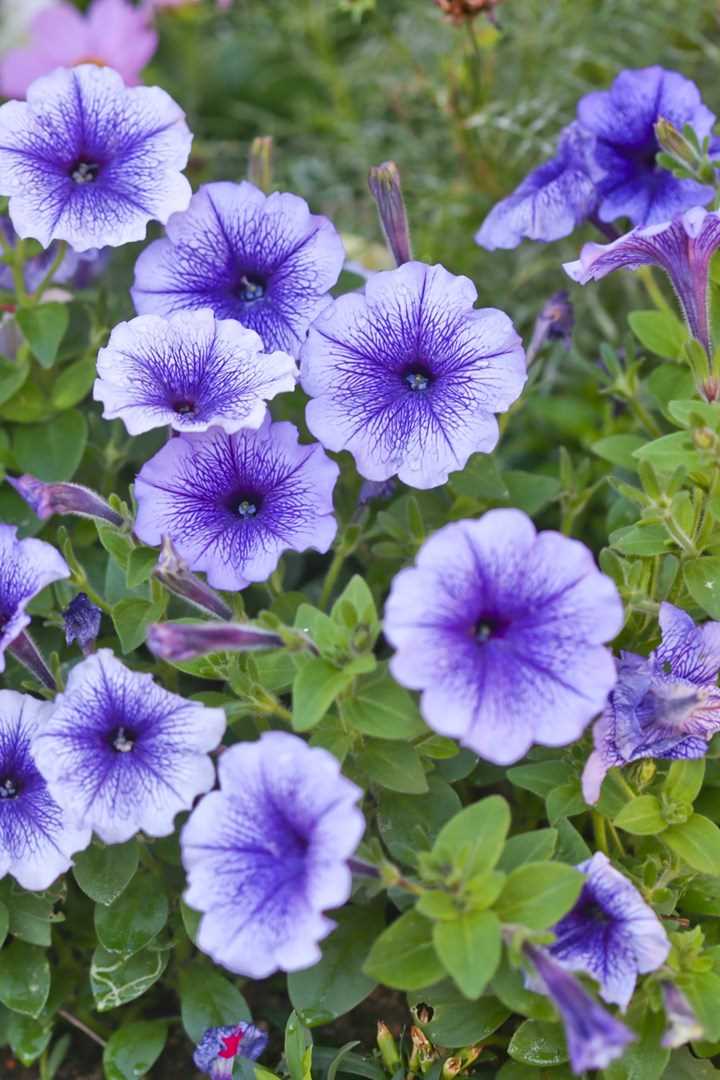

If you’re growing trailing varieties of petunias, such as Surfinias or Wave petunias, provide support to keep them from trailing on the ground. Use stakes, trellises, or hanging baskets to elevate and display their cascading blooms.
10. Enjoy the beauty:
Sit back and enjoy the stunning display of colors and fragrance that petunias bring to your garden. Regular maintenance, including watering, feeding, and deadheading, will ensure that your petunias continue to flourish throughout the growing season.
Nurturing seedlings in mid-March!
Mid-March is a great time to nurture petunia seedlings indoors. By starting them early, you’ll have strong, healthy plants ready to transplant into your garden when the weather warms up.
Here are some tips for nurturing petunia seedlings:
- Choose the right container: Use small, individual seedling pots or trays with drainage holes to allow excess water to escape.
- Use good-quality soil: Fill the containers with a well-draining potting mix that is rich in nutrients.
- Sow the seeds: Place 2-3 petunia seeds in each pot, pressing them gently into the soil. Cover them with a thin layer of soil and mist with water.
- Provide proper lighting: Place the containers in a location with bright, indirect sunlight or use fluorescent grow lights to provide the necessary light for germination.
- Keep the soil moist: Water the seedlings regularly, making sure not to overwater. The soil should be kept evenly moist, but not waterlogged.
- Monitor temperature: Petunia seeds germinate best at temperatures between 70-75°F (21-24°C). Use a heating mat to maintain a consistent temperature if needed.
- Thin out the seedlings: Once the seedlings have developed their first set of true leaves, thin them out, leaving only the strongest seedling in each pot.
- Fertilize regularly: Feed the seedlings with a balanced fertilizer every 2-3 weeks to promote healthy growth.
- Harden off the seedlings: About 2 weeks before transplanting, gradually introduce the seedlings to outdoor conditions by placing them in a sheltered location for a few hours each day.
- Transplant into the garden: When the danger of frost has passed and the seedlings are well-established, transplant them into your garden, spacing them according to the variety’s requirements.
By following these steps, you’ll give your petunia seedlings the best chance of thriving and producing stunning blooms in your garden. Happy gardening!
Choose the right petunia varieties
When it comes to growing stunning petunias, choosing the right variety is vital. There are numerous petunia varieties available, each with its own unique characteristics and growing requirements. Here are some popular petunia varieties to consider:
- Grandiflora Petunias: These petunias are known for their large, showy flowers that come in a wide range of colors. They are ideal for adding a burst of color to your garden beds or containers.
- Multiflora Petunias: Multiflora petunias produce smaller flowers and are more tolerant of heat and rain compared to other varieties. They are perfect for areas with unpredictable weather.
- Spreading Petunias: As the name suggests, spreading petunias have a trailing habit and are great for hanging baskets or as groundcover. They produce an abundance of flowers and can quickly fill empty spaces in your garden.
- Cascade Petunias: Cascade petunias also have a trailing habit but produce larger flowers compared to spreading varieties. They are perfect for cascading over walls, fences, or in hanging baskets.
- Miniature Petunias: If you have limited space or want to grow petunias in small containers, miniature petunias are an excellent choice. These petite flowers still pack a punch and come in a variety of colors.
- Wave Petunias: Wave petunias are known for their vigorous growth and spreading habit. They are incredibly low-maintenance and can tolerate a wide range of growing conditions.
Before selecting a petunia variety, consider the growing conditions in your area, such as sunlight, temperature, and soil type. Different varieties have different preferences, so choose those that will thrive in your specific climate and garden conditions.
In addition, think about the overall look you want to achieve in your garden or containers. Petunias come in various colors, including shades of pink, purple, red, white, and yellow. Some even have unique patterns or striped blooms. Consider the color palette you want to work with and choose petunia varieties that will complement your overall design.
By selecting the right petunia varieties, you can ensure that your seedlings have the best chance of thriving and producing stunning blooms.
Consider climate and growing conditions
Before starting to grow petunias, it is important to consider the climate and growing conditions in your area. Petunias are typically classified as warm-season plants that thrive in temperatures between 70°F (21°C) and 85°F (29°C). They prefer full sun exposure, so it is important to choose a location in your garden that receives at least 6-8 hours of direct sunlight per day.
Additionally, petunias prefer well-drained soil that is slightly acidic with a pH level between 5.5 and 6.5. If your soil is heavy with clay or tends to retain water, you may need to amend it with organic matter such as compost or peat moss to improve drainage.
Consider the average frost dates in your area as well. Petunias are extremely sensitive to frost and should only be planted outdoors after any danger of frost has passed. Depending on your location, this may vary from mid-March to late April.
In cooler climates, it may be beneficial to start petunia seedlings indoors 8-10 weeks before the last expected frost date. This will give them a head start and ensure they are ready to be transplanted outside when the weather conditions are more favorable.
By considering the climate and growing conditions in your area, you can provide the best environment for your petunias to thrive and produce stunning blooms all season long.
Start seeds indoors
Starting petunia seeds indoors is a great way to get a head start on the growing season. By starting them indoors in mid-March, you can ensure that your seedlings are ready to be planted outdoors when the weather is warmer.
What you will need:
- Petunia seeds
- Seed starting trays or small pots
- Seed starting mix or a combination of perlite and peat moss
- Planting labels
- Plastic dome or plastic wrap
- Grow lights (optional)
Step 1: Prepare the seed starting trays or pots
Fill the seed starting trays or small pots with seed starting mix or a combination of perlite and peat moss. Make sure to moisten the mix before planting the seeds.
Step 2: Plant the seeds
Follow the instructions on the seed packet for the recommended planting depth and spacing. Plant the seeds in the prepared trays or pots, and cover them lightly with additional seed starting mix.
Step 3: Label the trays or pots
Use planting labels to mark the trays or pots with the name and variety of the petunia seeds you planted. This will help you keep track of what you have planted.
Step 4: Cover the trays or pots
If using seed starting trays with plastic domes, place the domes on top to create a greenhouse-like environment. If you don’t have domes, you can cover the trays or pots with plastic wrap. This will help keep the moisture in and create a warm environment for germination.
Step 5: Provide light and warmth
Place the trays or pots in a warm location, ideally around 70°F (21°C). Petunias need plenty of light to grow, so consider using grow lights if you don’t have a sunny window available.
Step 6: Water regularly
Keep the seed starting mix moist but not waterlogged. Water the trays or pots from the bottom to avoid disturbing the seeds. You can use a tray with water and place the seed tray on top so that the mix absorbs water from the bottom.
Step 7: Transplant the seedlings
Once the seedlings have grown their first set of true leaves, they are ready to be transplanted into larger pots or trays. Gently remove the seedlings from the trays or pots and transplant them into their new containers, making sure to handle them by the leaves and not the delicate stems.
Step 8: Harden off the seedlings
Before planting the seedlings outdoors, they need to be hardened off. Gradually expose them to outdoor conditions by placing them outside for a few hours each day, gradually increasing the amount of time they spend outside over the course of a week.
Following these steps will help you start your petunia seeds indoors successfully and ensure that you have healthy and vibrant seedlings ready to be planted in your garden or containers when the weather is right.
Use seed starting mix and provide adequate light
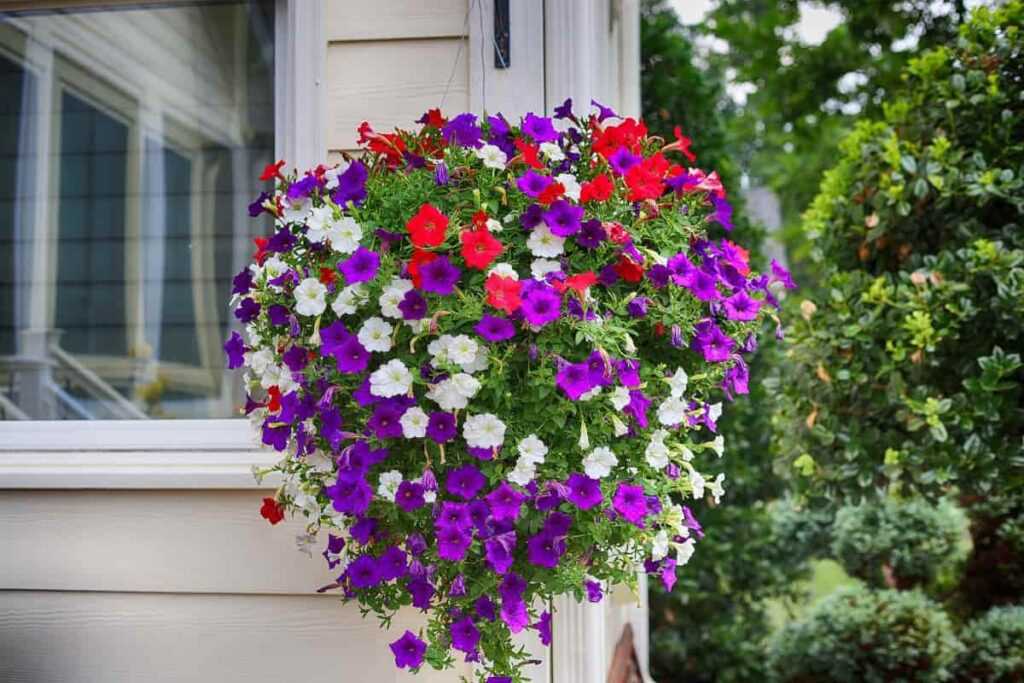

When starting petunia seedlings in mid-March, it’s important to use a high-quality seed starting mix. This type of soil specially formulated for seed germination helps provide the right balance of nutrients and moisture for the young plants.
Fill a seed tray or small containers with the seed starting mix, leaving about ¼ inch of space at the top to allow for watering. Gently tap the tray or containers on a flat surface to settle the soil.
Once the seeds are sown, it’s important to provide them with adequate light. Place the trays or containers in a well-lit area, preferably near a south-facing window or under fluorescent lights. Petunias require at least 14-16 hours of bright light each day to grow healthy and strong.
If natural light is not sufficient or available, you can use grow lights to supplement the light. Position the grow lights a few inches above the seedlings to mimic the intensity of natural sunlight.
Keep a close eye on the seedlings and adjust the light source as necessary to ensure they receive consistent and even light distribution. This will help prevent the seedlings from becoming leggy or weak.
Water and fertilize regularly
Proper watering and fertilizing are essential for the healthy growth of petunias. Here are some tips to help you keep your petunias well-hydrated and adequately nourished:
1. Watering
Petunias need regular watering to thrive. The frequency and amount of water required will depend on the weather conditions and the type of soil you have. Generally, petunias prefer evenly moist soil but avoid overwatering as it can lead to root rot.
- Water the plants deeply, ensuring that the water reaches the root zone.
- Water early in the morning or late in the afternoon to minimize water evaporation.
- Use a watering can or hose with a gentle spray nozzle to avoid damaging the delicate petunia flowers.
- Check the soil moisture level regularly by sticking your finger into the soil. If it feels dry about an inch below the surface, it’s time to water.
2. Fertilizing
Regular fertilization will provide the necessary nutrients for robust petunia growth and abundant blooms. Choose a balanced fertilizer with equal amounts of nitrogen, phosphorus, and potassium (NPK). Follow these guidelines for fertilizing your petunias:
- Start fertilizing about two weeks after planting the seedlings or transplanting young plants.
- Use a slow-release granular fertilizer or a water-soluble fertilizer according to the package instructions.
- Apply the fertilizer evenly around the plants, avoiding direct contact with the foliage.
- Fertilize every 2-4 weeks throughout the growing season, adjusting the frequency based on the specific fertilizer’s recommendations.
- Water the plants after fertilization to allow the nutrients to penetrate the soil and reach the roots.
3. Additional Tips
Here are a few additional tips to ensure the best results when watering and fertilizing your petunias:
- Avoid wetting the leaves when watering your petunias to prevent the development of diseases.
- Consider using a mulch layer around the plants to help retain moisture in the soil and reduce weed growth.
- Monitor your petunias for any signs of stress, such as wilting or yellowing leaves, and adjust your watering and fertilizing routine accordingly.
- Use a balanced approach when fertilizing – too much fertilizer can lead to excessive foliage growth with fewer blooms.
By following these watering and fertilizing practices, you will provide your petunias with optimal conditions for growth, ensuring stunning blooms throughout the season.
Establish a consistent watering schedule and use balanced fertilizer
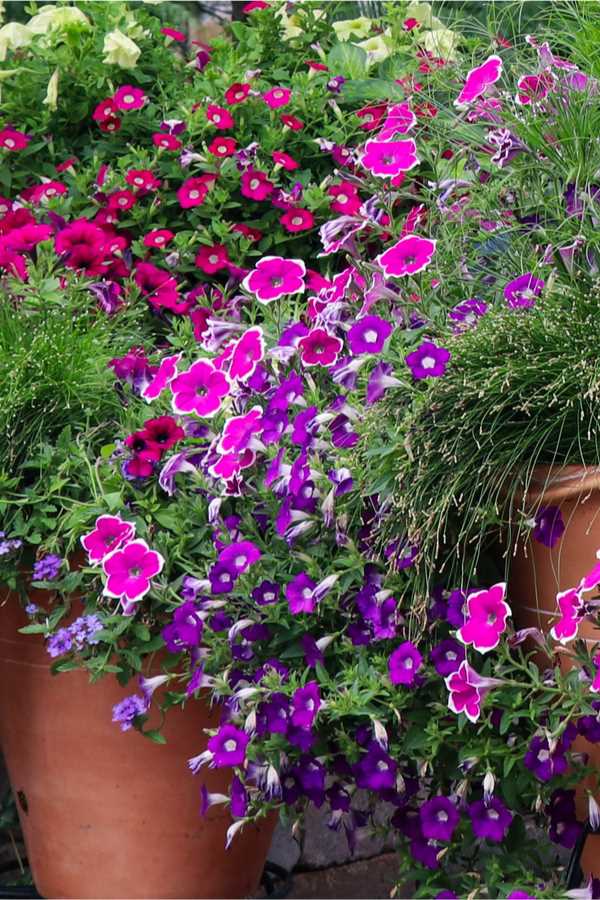

One of the key factors for growing stunning petunias is to establish a consistent watering schedule. Petunias require regular watering to keep their roots moist, but it’s important not to overwater them as this can lead to root rot. It’s best to water the plants early in the morning or in the evening, avoiding the hottest parts of the day to prevent the water from evaporating too quickly.
In addition to proper watering, using a balanced fertilizer will help promote healthy growth and vibrant blooms. Petunias benefit from a fertilizer with equal amounts of nitrogen, phosphorus, and potassium (NPK). This balanced formula provides the necessary nutrients for strong root development, lush foliage, and abundant flowering.
When applying the fertilizer, it’s important to follow the instructions on the packaging and avoid over-fertilizing, as this can damage the plants. A general guideline is to apply the fertilizer every two to three weeks during the growing season. Be sure to water the plants thoroughly after applying the fertilizer to ensure it is evenly distributed and absorbed by the roots.
Overall, establishing a consistent watering schedule and using a balanced fertilizer will help ensure the health and vitality of your petunias, resulting in stunning blooms throughout the season.
Provide proper support
As petunias grow, they tend to become top-heavy and may flop over if not adequately supported. Providing proper support will ensure that your petunias grow upright and display their stunning blooms to full effect. Here are some tips for providing support:
Stakes and cages
- Use stakes or small cages to support individual petunia plants. Insert the stakes or cages into the soil near the base of the plant, making sure they are firmly anchored.
- Gently tie the main stem of the petunia to the stake or cage using soft twine or plant ties. This will help keep the plant upright and prevent it from bending or breaking.
- Make sure the stakes or cages are tall enough to accommodate the full height of the petunia plant.
Trellises and fences
- If you are growing petunias in containers or hanging baskets, consider placing a trellis or small fence behind them for support.
- Select a trellis or fence that is tall enough to provide support without interfering with the petunias’ growth.
- Train the petunia vines to climb the trellis or fence by gently guiding them with your hands or using plant clips.
Regular maintenance
It’s important to regularly check on your petunias and make sure they are properly supported throughout their growth. Here are some maintenance tips:
- Check the ties or attachments to stakes, cages, trellises, or fences regularly to ensure they are secure. Adjust or replace them as needed.
- Prune any side shoots or branches that may be competing for nutrients or obstructing the main stem.
- Remove any dead or faded flowers to encourage new blooms and prevent the plant from getting too top-heavy.
By providing proper support for your petunias, you can help them reach their full potential and enjoy a stunning display of colorful blooms throughout the growing season.
Use stakes or cages to keep petunias upright
As petunias grow and produce beautiful flowers, their stems can become heavy and floppy, causing the plants to droop or even break. To prevent this, it’s important to provide support in the form of stakes or cages.
Staking individual petunia plants is a common method used to keep them upright. This involves inserting a stake into the ground near the base of the plant and gently tying the stem to the stake using soft garden twine or plant ties. Make sure to secure the stem loosely to allow room for growth.
Caging is another effective method for providing support to petunias. This involves placing a wire or metal cage around the plant and allowing the stems to grow through the openings. The cage should be inserted into the ground to ensure stability and prevent toppling.
Using stakes or cages not only keeps your petunias upright, but also improves air circulation and reduces the risk of disease. It also helps to maintain the aesthetic appeal of your garden and showcase the beautiful blooms of the petunias.
Questions and Answers:
Can I start growing petunias from seeds in mid-March?
Yes, you can start growing petunias from seeds in mid-March. It is a good time to start sowing petunia seeds indoors, as they need a long growing season before they can be transplanted outside.
What is the best way to sow petunia seeds?
The best way to sow petunia seeds is to gently press them into the soil, as they need exposure to light in order to germinate. It is important to keep the soil consistently moist during the germination process.
How often should I water petunia seedlings?
Petunia seedlings should be watered regularly, as they have shallow roots that can dry out quickly. It is important to water them whenever the top inch of soil feels dry to the touch.
When should I transplant petunia seedlings outside?
Petunia seedlings can be transplanted outside once all danger of frost has passed and the soil temperature reaches around 60 degrees Fahrenheit. This is usually around mid to late spring.
How should I fertilize my petunia seedlings?
It is recommended to use a balanced fertilizer, such as a 10-10-10, to fertilize petunia seedlings. This should be done every two weeks, following the package instructions for application rates.
What are some common problems that petunia seedlings may face?
Some common problems that petunia seedlings may face include damping off, which is a fungal disease that causes the seedlings to rot at the base, and aphid infestations. It is important to provide good air circulation and monitor the plants for any signs of pests or diseases.







